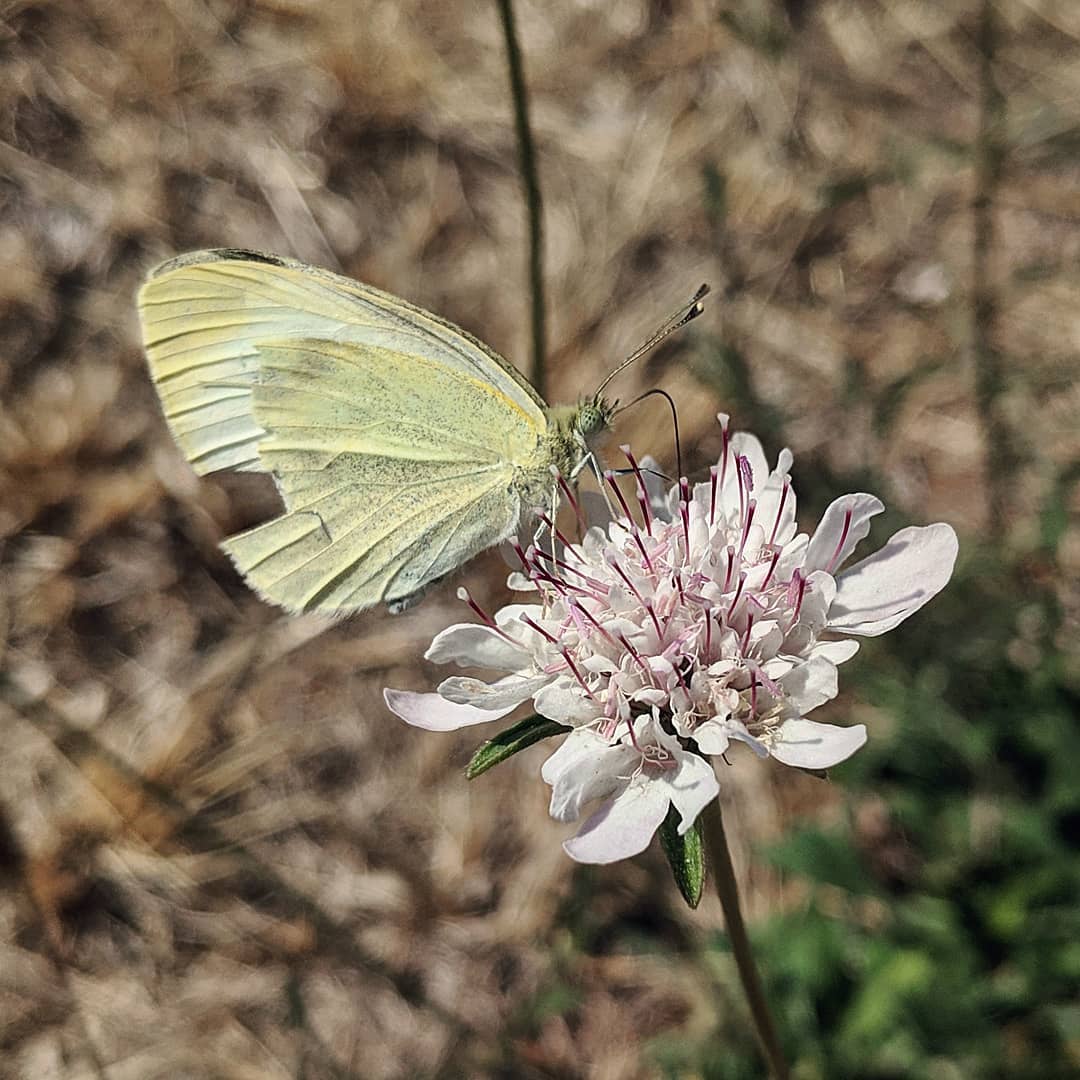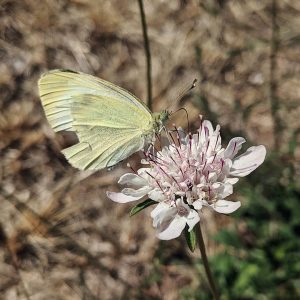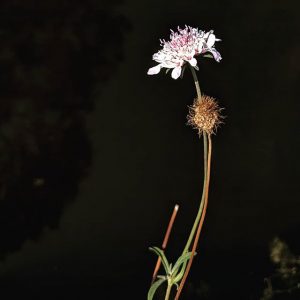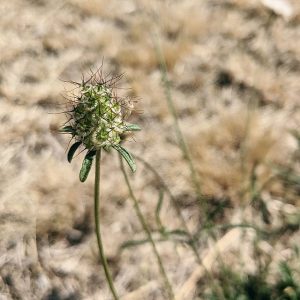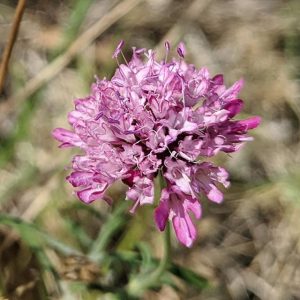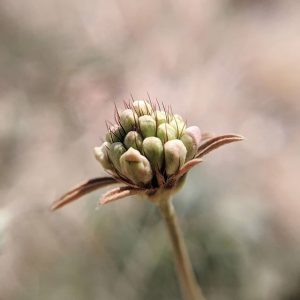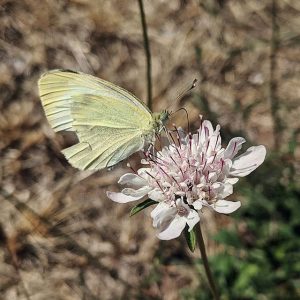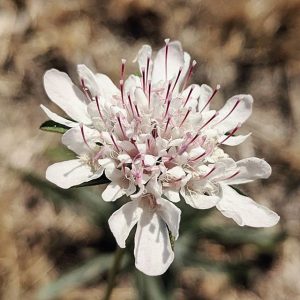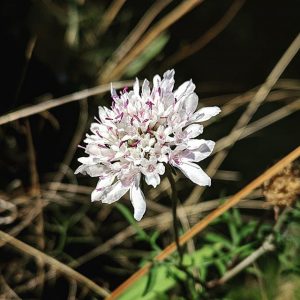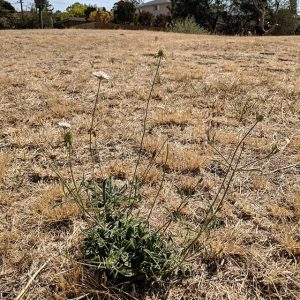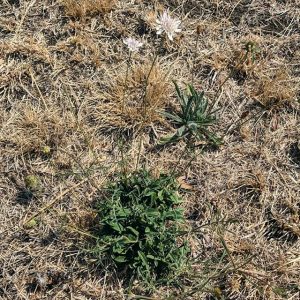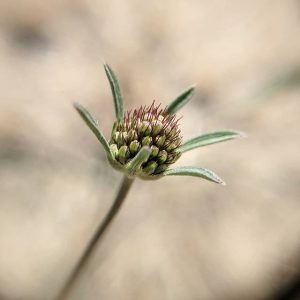Sweet Scabious, Pincushions (Scabiosa atropurpurea), a Mediterranean wildflower cultivated globally as a garden annual and cut flower. Where have you seen these familiar blooms growing wild?
Sweet Scabious appeared on an 1841 list of plants growing in a praiseworthy North Adelaide garden (South Australian Register, 16/01/1841) and by 1851 it had been recorded naturalised in that state. The species was reportedly wild in Victoria no later than 1859 when according to Hooker, quoting the notes of early Melbourne botanist and weeds-fanatic Frederick Adamson, it was ’thoroughly established at Melbourne.’ As Adamson’s collections were shipped to Kew in London, the first digitised record for Victoria only dates to 1884, when the species was collected ‘near Melbourne’.
Today Scabiosa ranks among South Australia’s more commonly recorded weeds, but is relatively less common in Victoria where the prevailing soil chemistry is not as supportive. Scabiosa seeds are not well-adapted for long-distance distribution, which also serves to limit and localise the spread of the species, although the seeds themselves have variable dormancy and can be quite persistent where it has established. Chance exposure to overwhelming wind or overland water flow helps with distribution to new sites where normal conditions may prove insufficient.
The plants seen here were found on damaged grassland and herbaceous basalt outcrops along a middle reach of Darebin Creek, east of Reservoir. Where present on rock, they were growing side by side with indigenous bluebell (eg Wahlenbergia stricta), although the native herb was notably more numerous. Where present in grassland, the plants were close to other large and showy annual weeds (including thistles, echiums and chicorium), presumably exploiting holes in what appeared otherwise to be a reasonably robust local weed management regime.
View Original Post on Instagram
Search for information about Scabiosa atropurpurea in the Flora of Victoria
View information and occurrences of Scabiosa atropurpurea on the Atlas of Living Australia
